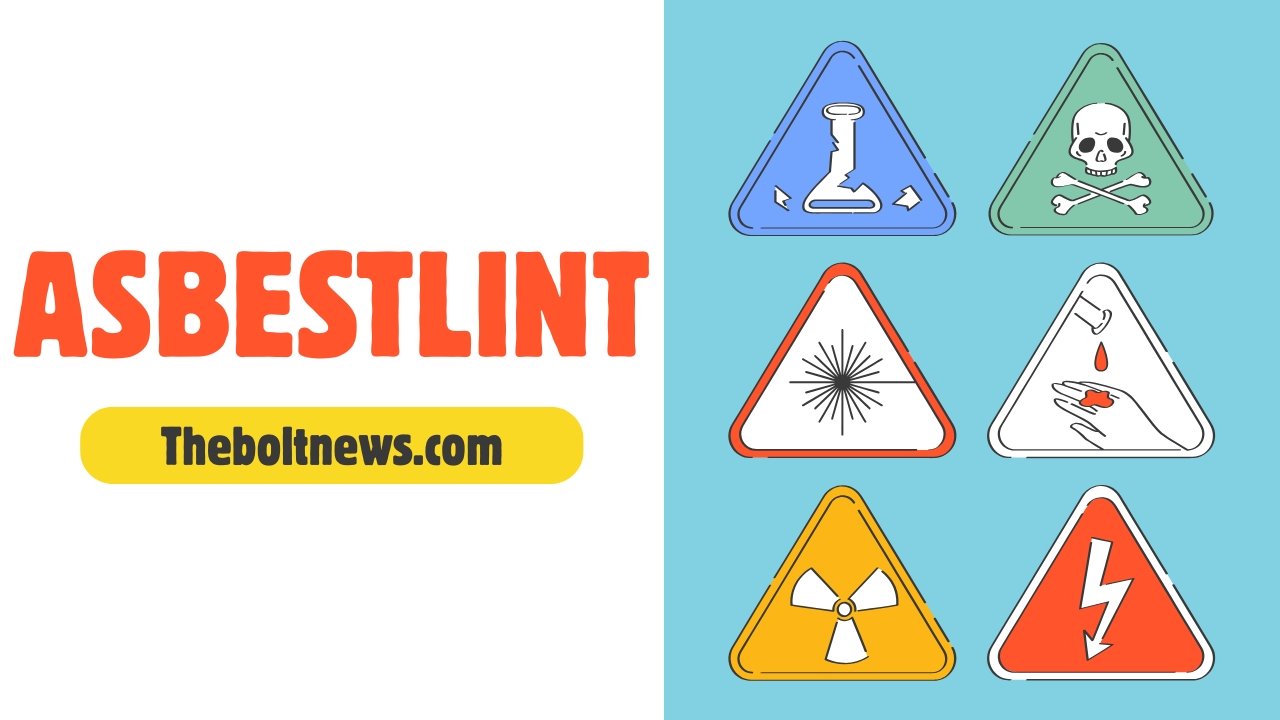Asbestlint, a term that might not ring bells for everyone, carries significant weight in the world of construction and renovation. This seemingly innocuous material has been a topic of heated debate due to its hazardous implications. Once hailed for its durability and fire-resistant properties, asbestlint has become synonymous with health risks that can linger long after exposure. Understanding what asbestlint is, along with its dangers and safety measures, is crucial for anyone involved in building or remodeling projects.
Navigating through the maze of regulations surrounding asbestlint can be daunting. However, being informed empowers you to make safer choices while exploring alternatives that protect both your health and the environment. Let’s delve into this important subject to shed light on how best to handle asbestlint responsibly.
The Dangers of Asbestlint Exposure
Asbestlint, often found in older buildings, poses significant health risks. The fibers it releases can be inhaled easily and become trapped in lung tissue.
Exposure to asbestlint is linked to serious conditions like asbestosis, lung cancer, and mesothelioma. These diseases may take years or even decades to develop after initial exposure.
Symptoms might not appear until the damage is extensive. This delayed reaction makes monitoring particularly challenging for those who have been exposed.
Even minimal contact can lead to long-term health issues. The danger lies not just with demolition workers but also with renovations that disturb existing materials.
Safety precautions are essential when dealing with any suspected presence of asbestlint. Awareness of these hazards helps protect both individuals working in affected environments and their families at home.
Safety Measures for Handling Asbestlint
When handling asbestlint, prioritizing safety is crucial to minimize the risk of exposure. Always wear appropriate personal protective equipment (PPE). This includes a high-efficiency particulate air (HEPA) filter mask, gloves, and disposable coveralls.
Ensure that the work area is well-ventilated. If possible, perform tasks outdoors or in open spaces to reduce airborne fibers. Use damp methods when cutting or breaking asbestlint; this helps control dust and prevents particles from becoming airborne.
Keep the workspace organized and free from unnecessary clutter. Clearly label areas where asbestlint is present to prevent accidental contact by untrained individuals.
Proper disposal of any waste materials containing asbestlint must follow local regulations. Seal them in airtight bags before removal to avoid contamination during transport.
Educate anyone involved about potential hazards associated with asbestos-containing products like asbestlint. Knowledge empowers safer practices on-site.
Regulatory Standards and Guidelines
Regulatory standards for asbestlint aim to protect workers and the public from its potential hazards. Various agencies, including OSHA in the United States and HSE in the UK, have established strict guidelines.
These regulations specify permissible exposure limits. They also outline required safety measures when handling asbestlint. This includes personal protective equipment like respirators and gloves.
Regular inspections are mandated to ensure compliance with safety protocols. Employers must provide training on risks associated with asbestlint exposure.
Documentation is critical too; businesses need to maintain records of any asbestos-related activities. Failure to comply can lead to severe penalties, emphasizing the importance of adherence.
Furthermore, many countries have phased out or banned certain uses of asbestlint altogether due to health concerns. Staying informed about local regulations is essential for anyone involved in construction or renovation projects involving this material.
Common Uses of Asbestlint
Asbestlint, a type of asbestos tape, has been widely used in various industries due to its fire-resistant properties.
Historically, it was commonly applied in construction for insulating pipes and ducts. Builders appreciated its ability to withstand extreme temperatures while preventing heat loss.
In addition to insulation, asbestlint found a place in automotive manufacturing. It was often used for sealing gaskets and lining engine compartments.
Moreover, the tape served well in electrical applications. Its non-conductive nature made it ideal for insulating wires and components.
While many traditional uses have faded away due to health concerns, some older buildings still contain remnants of this material. Understanding these applications helps highlight the importance of safe removal and management practices today.
Alternatives to Using Asbestlint
As awareness of the risks associated with asbestlint grows, many are seeking safer alternatives. Thankfully, several materials can effectively replace it without compromising quality.
Fiberglass tape is one option that offers similar properties. It’s lightweight and resistant to heat, making it suitable for various applications.
Another alternative is silicone tape, which provides excellent insulation and flexibility. This type of tape is often used in electrical work and plumbing projects.
For those involved in construction or renovation projects, bio-based adhesives offer a sustainable choice. They perform well while posing fewer health risks compared to traditional products containing asbestos fibers.
Consider using aluminum foil tapes for specific tasks requiring high durability and thermal resistance. These options not only enhance safety but also align with modern environmental standards. Embracing these alternatives helps mitigate exposure risks while maintaining efficiency in your projects.
Conclusion
Asbestlint poses significant health risks that cannot be ignored. Awareness is key to mitigating these dangers. By following safety measures and adhering to regulatory standards, we can protect ourselves and others from the harmful effects of asbestos exposure.
Alternatives to asbestlint are available and increasingly viable, making it easier for industries to transition away from this hazardous material. It’s crucial for businesses and individuals alike to stay informed about the safe handling of materials like asbestlint, ensuring a healthier environment for everyone.
Staying educated on these topics not only helps in compliance but also fosters a culture of safety within workplaces. The move towards safer materials will benefit future generations, leading us toward a more sustainable approach in construction and manufacturing practices.

